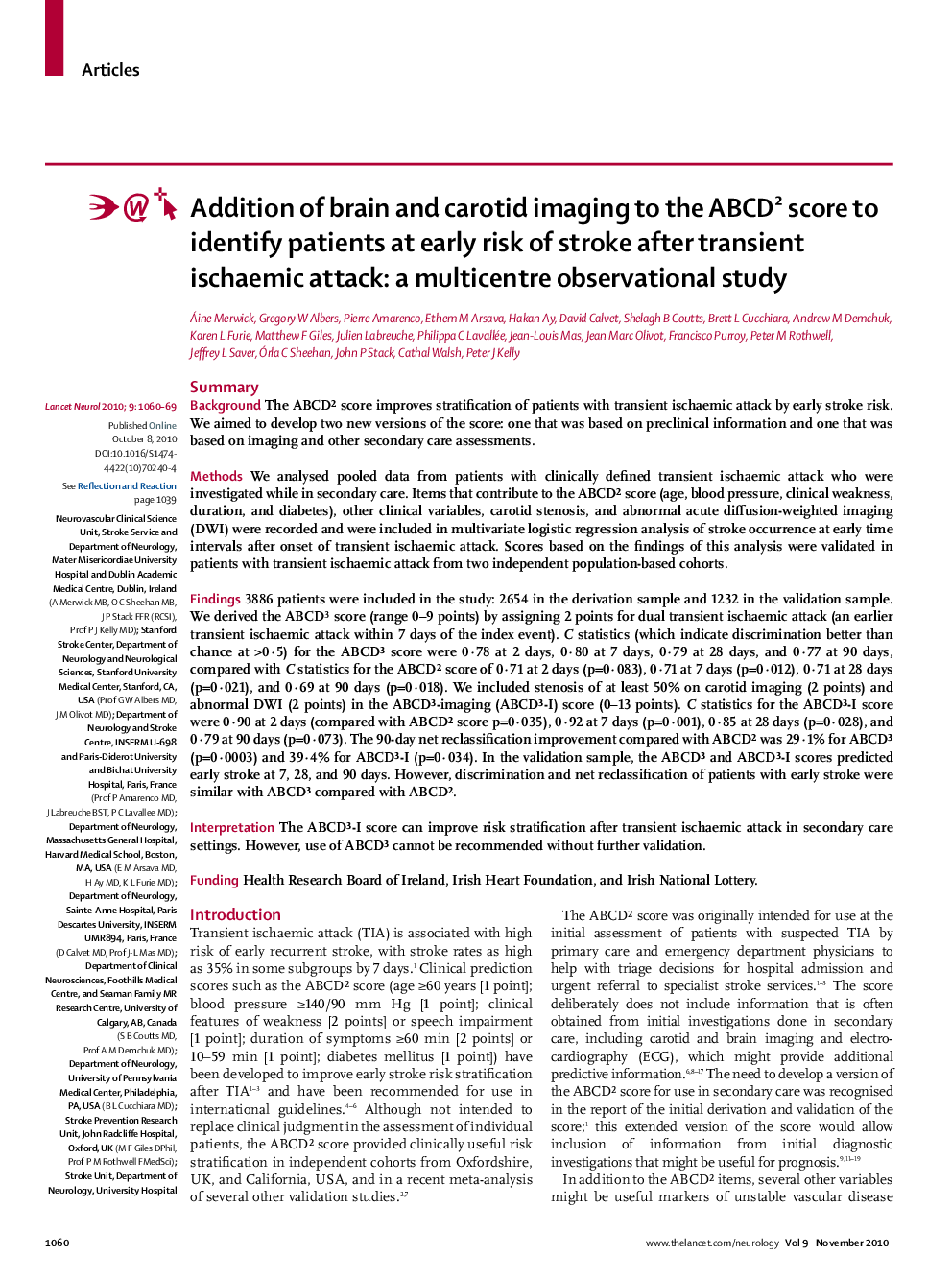| Article ID | Journal | Published Year | Pages | File Type |
|---|---|---|---|---|
| 3067243 | The Lancet Neurology | 2010 | 10 Pages |
SummaryBackgroundThe ABCD2 score improves stratification of patients with transient ischaemic attack by early stroke risk. We aimed to develop two new versions of the score: one that was based on preclinical information and one that was based on imaging and other secondary care assessments.MethodsWe analysed pooled data from patients with clinically defined transient ischaemic attack who were investigated while in secondary care. Items that contribute to the ABCD2 score (age, blood pressure, clinical weakness, duration, and diabetes), other clinical variables, carotid stenosis, and abnormal acute diffusion-weighted imaging (DWI) were recorded and were included in multivariate logistic regression analysis of stroke occurrence at early time intervals after onset of transient ischaemic attack. Scores based on the findings of this analysis were validated in patients with transient ischaemic attack from two independent population-based cohorts.Findings3886 patients were included in the study: 2654 in the derivation sample and 1232 in the validation sample. We derived the ABCD3 score (range 0–9 points) by assigning 2 points for dual transient ischaemic attack (an earlier transient ischaemic attack within 7 days of the index event). C statistics (which indicate discrimination better than chance at >0·5) for the ABCD3 score were 0·78 at 2 days, 0·80 at 7 days, 0·79 at 28 days, and 0·77 at 90 days, compared with C statistics for the ABCD2 score of 0·71 at 2 days (p=0·083), 0·71 at 7 days (p=0·012), 0·71 at 28 days (p=0·021), and 0·69 at 90 days (p=0·018). We included stenosis of at least 50% on carotid imaging (2 points) and abnormal DWI (2 points) in the ABCD3-imaging (ABCD3-I) score (0–13 points). C statistics for the ABCD3-I score were 0·90 at 2 days (compared with ABCD2 score p=0·035), 0·92 at 7 days (p=0·001), 0·85 at 28 days (p=0·028), and 0·79 at 90 days (p=0·073). The 90-day net reclassification improvement compared with ABCD2 was 29·1% for ABCD3 (p=0·0003) and 39·4% for ABCD3-I (p=0·034). In the validation sample, the ABCD3 and ABCD3-I scores predicted early stroke at 7, 28, and 90 days. However, discrimination and net reclassification of patients with early stroke were similar with ABCD3 compared with ABCD2.InterpretationThe ABCD3-I score can improve risk stratification after transient ischaemic attack in secondary care settings. However, use of ABCD3 cannot be recommended without further validation.FundingHealth Research Board of Ireland, Irish Heart Foundation, and Irish National Lottery.
